TV Cut Down
Cutting A Feature Into a "TV Hour"
Photo: Richard Pierce, BBC narrator of "Lions, Bones & Bullets"
This FAQ page focuses on how we at New Doc Editing collaborate with directors to create a “TV hour” cut down. In addition to this Q&A, be sure to read Karen’s blog:
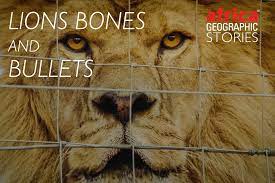 Q: OK, so I want a TV-hour version of my feature documentary. If I work with New Doc Editing, where would we start?
Q: OK, so I want a TV-hour version of my feature documentary. If I work with New Doc Editing, where would we start?
A: I ask filmmakers to email me their ideas about what absolutely needs to stay in the shorter TV version, as well as identify sections that they could live without. Their ideas are often spot on! And just as often, there are additional characters, scenes, subplots, or parallel plots that can be amputated, or truncated, without losing the film’s essential message and emotive power.
Q: Are you going to kill my darlings?
A: It’s possible. And most assuredly your TV cut down will be a better film for it! Many directors have fallen in love with their feature’s flow after months or years of working on it. They can’t see what to cut.
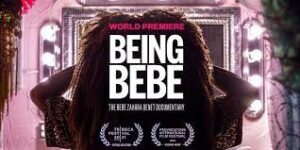 “I was way too close to it to see how we could possibly make our story work with 37 fewer minutes,” said Emily Branham, Director/Producer of the 90-minute award-winning festival favorite “Being BeBe” (2021). “Karen’s system made it very easy for me to execute her suggestions myself in Premiere. She’s clearly an expert in structure, and I felt that she really took to heart our priorities when she made her cuts. Her guidance saved us a lot of time.”
“I was way too close to it to see how we could possibly make our story work with 37 fewer minutes,” said Emily Branham, Director/Producer of the 90-minute award-winning festival favorite “Being BeBe” (2021). “Karen’s system made it very easy for me to execute her suggestions myself in Premiere. She’s clearly an expert in structure, and I felt that she really took to heart our priorities when she made her cuts. Her guidance saved us a lot of time.”
We couldn’t imagine a way to further cut from a feature-length documentary to an even shorter TV edit without losing critical parts of the history. Yet, Karen quickly and efficiently provided TV edit recommendations that were absolutely spot on, and maintained every aspect of the story – so much so that those who watched both versions of the film barely noticed the cuts!
A: How much does it cost to create a TV-Hour cut?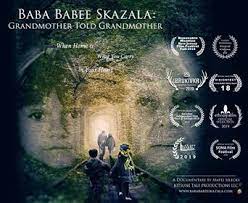
Q: At New Doc Editing, we offer filmmakers two options: 1) we make suggested cuts only in the film’s transcript, and you or your editor can do the actual editing from that “paper cut” transcript. The fee is $2500. If you need two cutdowns of various lengths, for example, a 40-minute community screening cut and a “TV hour”, add $900.
The above rates are based on feature films up to 100 minutes in length. For longer cuts, please add $250 for each additional 15 minutes. For shorts (under 40 minutes), take $700 off the rates above.
The second option is to have us make the cuts in the transcript, and then one of our experienced editors will also cut the TV Hour for you–with your ongoing feedback, of course. In addition to the above quoted transcript fee, the rate for editing is $2950/week, and it generally takes 4-6 days to do the edit , especially if you want to make a few additional changes beyond the TV cutdown.
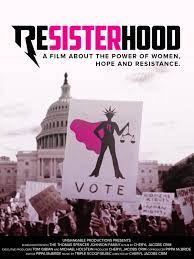 For example, director Cheryl Crim, whose documentary “ReSisterhood” won several festival awards, took six days in the edit so she could also fix small mistakes in the feature. “Karen’s a brilliant editor,” she said, referring to the transcript cut. “She did a magnificent job on the paper edit, turning my 96-minute feature, into a 56-minute TV cut.”
For example, director Cheryl Crim, whose documentary “ReSisterhood” won several festival awards, took six days in the edit so she could also fix small mistakes in the feature. “Karen’s a brilliant editor,” she said, referring to the transcript cut. “She did a magnificent job on the paper edit, turning my 96-minute feature, into a 56-minute TV cut.”
Then Crim hired New Doc Editing to actually edit the TV cut based on the new transcript. How did it go? In her words, “Karen’s staff editor was a pleasure to work with. Forty minutes is a lot to cut out of a feature, but he stuck with what was sometimes a difficult project. And he made sure the final edit was spectacular.”
Q: So I could address other issues besides just cutting down the feature?
A: Yes. As many filmmakers such as Crim have discovered, a TV recut is also a chance to finesse all those little bugs that never got resolved—and that maybe you’ve had to put up with during multiple film festival screenings. These changes include audio that is too hot or low, an important omission in the credits, updating stats (or an epilogue), or even adding new graphics or animation.
Q: Sounds good. What do I need to provide you?
A: For Option #1: a video file of the feature cut along with an accurate transcript with time code. For Option #2: if we’re also editing, we’ll need your drive with the final project files, footage, possibly special fonts, and audio stems from a sound mix. (We can also color correct if needed.)
Q: Can I do option #1 and decide later on option #2?
A: Yes. Note we require pre-payment for all work.
Q: What are the actual deliverables?
A: For the transcript cut-down, we deliver two versions of your transcript as Word documents. (Note there is no call, but you can request a call for our hourly fee of $275.) The first transcript shows the new story flow, by deleting all the suggested cuts. The second version is more comprehensive. It shows precisely where the cuts will be made.
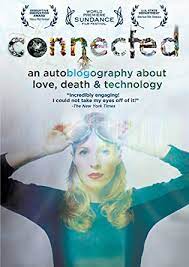 Specifically, we strikethrough in red anything that could go. We cut material that is repetitive, not needed, or otherwise tangential to the essential plot and themes. We love doing this, and editing minds are very good at discerning what to keep and what to cut. For example, sometimes it makes sense to cut a character who duplicates another’s role. Or, amputate entire scenes that, while good, are not critical to understanding and enjoying the film. All of this with your consent, of course!
Specifically, we strikethrough in red anything that could go. We cut material that is repetitive, not needed, or otherwise tangential to the essential plot and themes. We love doing this, and editing minds are very good at discerning what to keep and what to cut. For example, sometimes it makes sense to cut a character who duplicates another’s role. Or, amputate entire scenes that, while good, are not critical to understanding and enjoying the film. All of this with your consent, of course!
Karen Everett has a brilliant mind and made me and my team feel like we had a wonderful guide. She gave us insightful perspective that you often lose when you have been too many months in the editing room. The clear way that she communicates through her notes, her video commentary, and plot maps is so helpful. She is a fantastic story consultant, and I can’t recommend her enough.
Q: Tell me more about your workflow.
A: The first time we watch your cut, we immerse emotionally and observe where feelings come up: moved, bored, intrigued, or confused.
On the second pass, we watch the feature carefully with transcript in hand and begin adding strike outs in red to sections that are not necessary.
Now, what if we like a section, but it doesn’t seem critical to appreciating the overall TV cut? We’ll keep it in the transcript, but highlight it in blue. This indicates to the director where they could make further cuts if their TV version needs to be a little shorter.
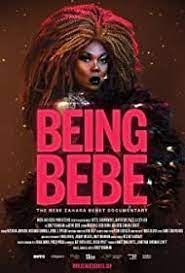 On the other hand, if we think a section could be cut–but we’re not sure the director can bear it–we strike-through the text but highlight it in green (rather than red). These green sections show the director and editor where to add footage back in if the cut is running a tad short for a venue’s TV-hour. Note: the green and blue sections generally add up to a couple minutes each, giving you editorial suggestions to meet the required total running time (TRT).
On the other hand, if we think a section could be cut–but we’re not sure the director can bear it–we strike-through the text but highlight it in green (rather than red). These green sections show the director and editor where to add footage back in if the cut is running a tad short for a venue’s TV-hour. Note: the green and blue sections generally add up to a couple minutes each, giving you editorial suggestions to meet the required total running time (TRT).
Then we’ll actually make the cuts in the transcript and see how close it is to the calculated page length to the desired TRT.
Finally, we’ll review the script and film one more time to make sure it’s as tight and as compelling as it can be! Then we’ll send the transcript to you, which completes our contract. To keep your cost down, we do not include a call or follow up. But if you need additional help, we can use my hourly fee of $350.
Karen’s system made it VERY easy for me to execute her suggestions myself in Premiere. She’s clearly an expert in structure, and I felt that she really took to heart our priorities when she made her cuts. I was way too close to it to see how we could possibly make our story work with 37 fewer minutes, and her guidance saved us a lot of time. My producers were impressed at how solid the first pass was after following her notes faithfully, and we are very happy that we’ve chosen to create this TV-hour version.
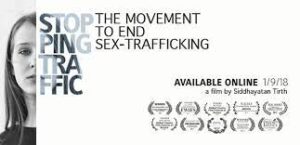 Q: Doesn’t cutting sections create awkward transitions?
Q: Doesn’t cutting sections create awkward transitions?
A: Yes, cutting sometimes leaves an awkward transition, so I often include suggestions for creating a smooth transition. These recommendations could include text for a title card, moving a section, or simply cross-dissolving the audio. As much as possible, I’ll suggest cuts that don’t interfere with the existing music track.
That said, there will be likely several transitions where an editor will need to finesse the audio.
Q: What happens next?
A: Now it’s time for you or someone from your team to edit the TV cut from the transcript.
Or, you can hire one of our editors to make the cuts. We’ll load the TV hour onto Frame.io (a video critiquing software), where you can easily make comments at exact time codes.
If you need more changes, you can talk with the Editor. This back-and-forth continues until you are pleased with the cut. Usually 1-2 passes will do it. Then we will export whatever specs you or your broadcaster may require.
Q: What should I do with my new TV cut?
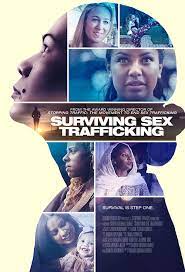 A: While distribution is not our area of expertise, I can suggest several distribution strategists with whom I’ve worked. If you’d like, I’ll make an email introduction. These consultants are at the top of their game. They can devise a hybrid distribution strategy. They can also help you find a domestic distributor and a foreign sales agent to market your film abroad (where a TV hour version is strongly preferred.)
A: While distribution is not our area of expertise, I can suggest several distribution strategists with whom I’ve worked. If you’d like, I’ll make an email introduction. These consultants are at the top of their game. They can devise a hybrid distribution strategy. They can also help you find a domestic distributor and a foreign sales agent to market your film abroad (where a TV hour version is strongly preferred.)
For domestic markets, don’t overlook that the TV hour (or shorter versions) are more likely to be booked at community screenings because it allows more time for discussion than a feature. For example, one filmmaker told her distribution strategist, Peter Broderick, that when she screened her feature documentary, “very few people stayed for the Q&A. When she screened her hour version, almost everyone stayed.”
Broderick points out that hour-long versions are also helpful for domestic educational sales, allowing a documentary to be screened in a single class period.
Distribution strategist Keith Ochwat of Show&Tell agrees. “One thing that surprised me is that the TV version … ends up getting used more in classrooms, at conferences, and with corporate partners,” he says. “Shorter is sweeter in many cases.”
For more information on cutting down your feature to a TV hour version (or shorter), contact us!
Contact UsKaren is a caring teacher at heart. It’s hard to find quality, talented, and professional documentary story consultants out there. She is the real deal. Her knowledge will help you share the best version of your story with the world. For my next film, I know who I will turn to again.
Free Resources
- #1 Suggestion. Read my e-book “Documentary Editing”, available for free (formerly $27). Chapters 22-24 focus on cutting various lengths of your feature for fundraising, as well as broadcast.
- Download my seminar "Editing the Character Driven Documentary"
- NETA Documentary Winners Prepare TV Cut-down
- Watch webinar "Editing for Conferences: Your Fundraising Secret Weapon"
- Read "The Feature Length Fallacy" (POV article)